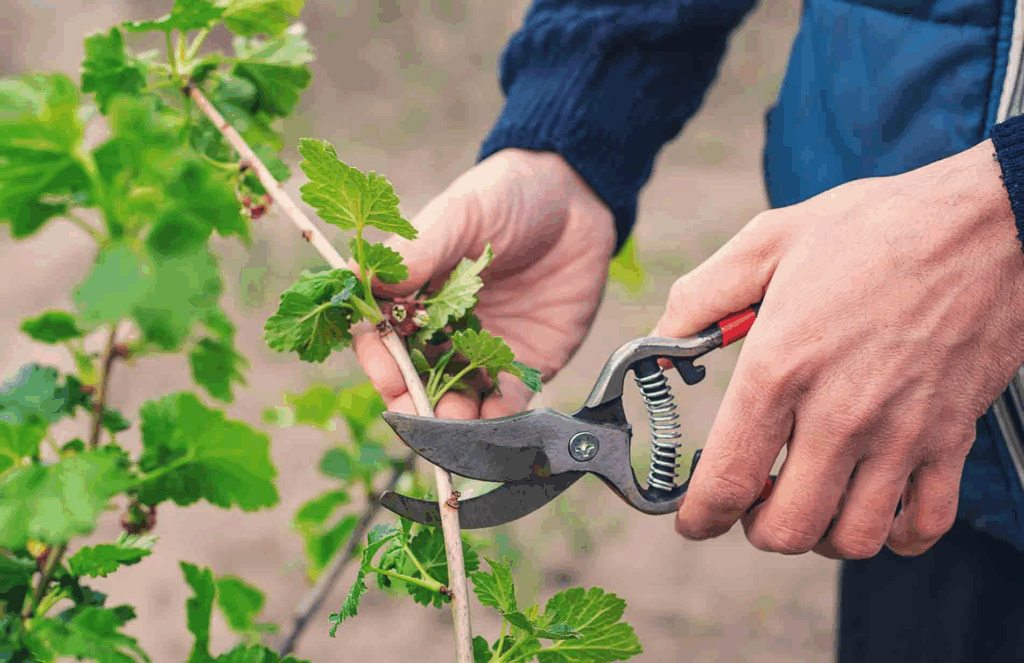There’s something incredibly fulfilling about growing a plant from a tiny cutting or a handful of seeds. It’s not just about saving money—though that’s a great perk—it’s about the joy of watching something thrive because of your care. If you’ve ever looked at your garden and thought, “I wish I had more of that plant,” then propagation is the answer.
In this easy-to-follow guide, you’ll learn how to grow new plants from the ones you already have—whether you’re working with houseplants, herbs, flowers, or shrubs. We’ll cover the tools you need, when to get started, the best methods for different plants, and how to take care of your new plant babies.
What is Plant Propagation?
Plant propagation simply means making new plants from existing ones. It can happen naturally (like seeds dropping into the soil), or you can step in and help things along using techniques like cuttings, division, layering, and grafting.
It’s a gardener’s secret weapon: you can grow more plants without spending a dime and preserve your favorite varieties for years to come.
Why Should You Try Propagating?

Here’s what makes propagation such a smart move:
- It’s free (or very cheap)
- You can share plants with friends and family
- You get to keep rare or heirloom varieties going
- It gives you more control over your garden layout
- You’ll feel more connected to your plants and the growing process
When’s the Best Time to Propagate?
Timing is everything, and it depends on the plant and method. But generally:
- Spring to early summer is great for most propagation methods—plants are actively growing
- Late summer to early fall is best for hardwood cuttings or root division
- Avoid propagating during stressful times for the plant, like when it’s blooming heavily or going dormant
The Main Ways to Propagate Plants (and How to Do Each One)
1. From Seeds
Starting plants from seeds is classic—and perfect for gardeners who enjoy the long game.
How to do it:
- Collect seeds from healthy plants
- Fill trays or small pots with seed-starting soil
- Sow the seeds, cover lightly with soil
- Mist with water and place in a warm, bright spot
- Keep the soil consistently moist
Great for: Vegetables, annual flowers, herbs, native wildflowers
Pro tip: For hard seeds (like morning glories), soak them overnight before planting to help them sprout faster
2. From Cuttings
Want an exact copy of your favorite plant? Take a cutting and let it grow roots.
Types of cuttings:
- Softwood: Young, flexible stems (best in spring)
- Semi-hardwood: Partly mature stems (late summer)
- Hardwood: Dormant, woody stems (fall or winter)
How to do it:
- Snip a healthy stem with clean scissors
- Remove the bottom leaves
- Dip the cut end in rooting hormone (optional but helps)
- Plant it in moist potting mix
- Cover with a plastic bag to hold humidity
- Keep in bright, indirect light
Great for: Herbs, succulents, houseplants, coleus, hydrangeas, roses
3. By Division
Got a plant that’s looking a little crowded? Split it up and give each clump its own space.
How to do it:
- Gently dig up the plant
- Shake off loose soil
- Use your hands or a clean knife to separate the root clumps
- Replant each piece right away and water well
Great for: Ferns, hostas, daylilies, ornamental grasses
Tip: Divide plants in spring or fall when they’re not flowering
4. By Layering
This method is super simple—and the new plant grows while it’s still attached to the original.
How to do it:
- Pick a low-growing stem
- Bend it down to the ground
- Remove a few leaves where it touches the soil
- Bury that part and pin it down with a stone or clip
- Keep the soil moist
- Once it grows roots, cut it from the parent and transplant it
Great for: Strawberries, raspberries, trailing vines, climbing plants
5. By Grafting
A more advanced technique—but worth it for fruit trees and special ornamentals.
How to do it:
- Choose two compatible plants
- Cut both the top (scion) and bottom (rootstock) at a matching angle
- Fit them together and wrap with grafting tape
- Keep in a humid area until they fuse
Great for: Apples, citrus trees, roses, flowering trees
What You’ll Need to Get Started
Keep these tools handy:
- Sharp scissors or pruning shears
- Clean knife (for division or grafting)
- Rooting hormone (optional but useful)
- Potting soil or seed-starting mix
- Small pots or seed trays
- Plastic bags or humidity domes
- Spray bottle
- Plant labels (trust us, they help)
Tip: Clean your tools before and after use to prevent the spread of disease.
Aftercare: How to Keep Your New Plants Happy
Once your cuttings or divisions are planted, they’ll need some extra love.
- Light: Bright, indirect light is best
- Water: Keep soil evenly moist, not soggy
- Humidity: Cover with plastic or mist often
- Temperature: Keep them warm—ideally 65–75°F (18–24°C)
- Acclimate Slowly: Once established, gradually introduce them to outdoor light and airflow
Common Mistakes to Avoid
- Overwatering: It’s the fastest way to rot new roots
- Using weak or unhealthy cuttings: Only use strong, pest-free stems
- Skipping the callus step for succulents: Let the cut end dry before planting
- Low humidity: Young cuttings dry out fast—maintain moisture
- Not enough light: Consider grow lights if you’re indoors
Final Thoughts
Propagation isn’t just about growing more plants—it’s about the joy of watching life take root, little by little, with your help. Whether you’re starting from seeds, cutting back an overgrown basil plant, or dividing your favorite fern, every method is an opportunity to learn, experiment, and grow something new.
Also Read : 10 Powerful Balcony Gardening Tips to Grow More in Small Spaces